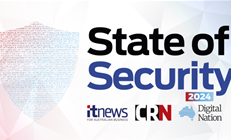Some of Australia’s top 20 federal government agencies, accounting for over 80 percent of all government expenditure, find it hard to allocate cloud costs and fund experimental or "iterative" works.

A digital review [pdf], commissioned by the previous government, shows outdated funding models, together with insufficient funding above business-as-usual operating costs, are curtailing the government digital ambitions.
The government wants to be a “global digital leader” by 2025 and idolises the likes of Google, Amazon and Netflix in the digital review, examining what they do, and what might be strategically cross-applicable.
However, much of the review’s findings point to some more fundamental challenges that stand in the way of these ambitions and will need to be more immediately dealt with.
A common theme is funding.
One of the topline findings is that “only one of 20” of the participating agencies “agreed that funding was sufficient to implement major change programs, decommission or transform legacy systems.”
Smaller and mid-sized agencies, in particular, spent much more of their IT budgets on business-as-usual costs, “indicating those cohorts require further support to fund priority transformational digital and ICT projects”.
Larger agencies generally had bigger IT budgets, but were often unhappy at what they got from vendors.
“Larger agencies are less satisfied with the performance of their larger ICT contracts (i.e. greater than A$50m in annual contract spend),” the review found.
The funding agencies did receive was often “inconsistent” and could be promised and then axed, making it hard for agencies “to plan for the future of platforms and systems.”
“The funding is regularly reduced, and often deprioritised in planning new capability,” the review found.
“Funding is often delivered ad hoc and is not routinely costed into capital funding requests at an appropriate level.”
The review warned that the funding problem had no quick-fix, perhaps explaining why the report was only published after the election and not before.
“A single intervention to deliver change in these areas will be insufficient to bring the Australian government to global digital leadership,” the review found.
One-in-three agencies “did not believe their [vendor] contracts allowed them to be flexible in delivering new digital and ICT capabilities.”
An unspecified number - “some” - also said “their internal budget processes are incompatible with modern funding approaches for digital investments, including releasing funding in faster, more frequent cycles.”
“Current budgetary processes are not supportive of ‘fail fast’ implementation and delivery approaches,” the review found.
“This reduces agencies’ ability to engage in experimentation, agile delivery, and continuous, iterative improvement.”
The government, through the Digital Transformation Agency (DTA), indicated it wanted agencies to be “able to release smaller allocations of funding more quickly, encouraging faster and more iterative development of digital solutions and services.”
While slow-moving finance models and inflexible vendor agreements hindered progress, so did the ability of some agencies to allocate budgets for cloud-bound workloads.
“Agencies indicated additional complexity in determining an appropriate split of capital and operating funding, particularly given the introduction of cloud and as-a-service infrastructure solutions with operating cost bases,” the review found.
The flipside to that is that “50 percent of agencies actively reported finding value in the whole-of-government approach to cloud adoption, whole-of-government cloud platforms, and the [2014] cloud-first policy”.
That highlights another shortcoming identified by the review: a lack of knowledge-sharing and reuse across agencies.
The varying cloud-related fortunes of some over others suggests there is valuable costing and budget allocation experience that could be more widely shared.




















